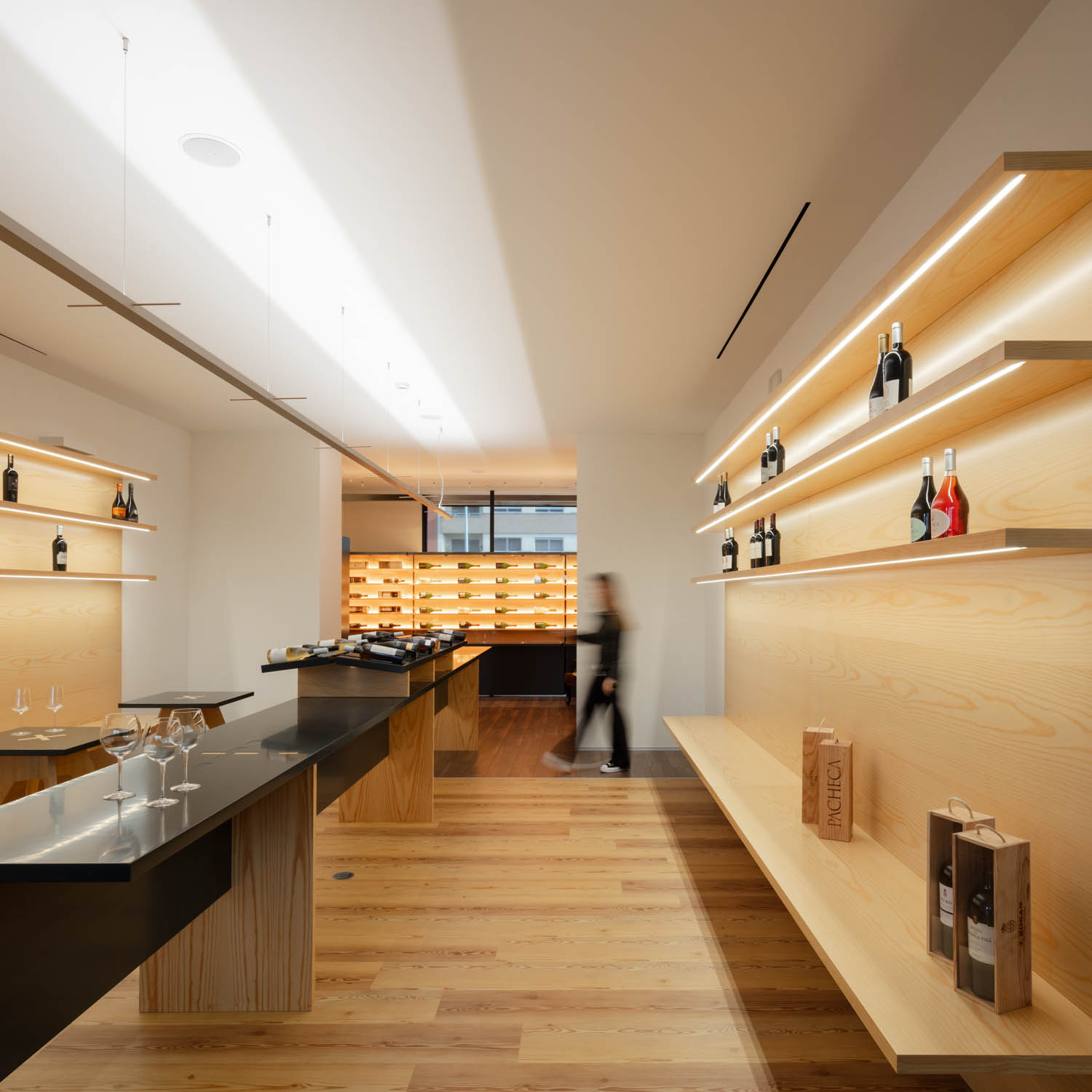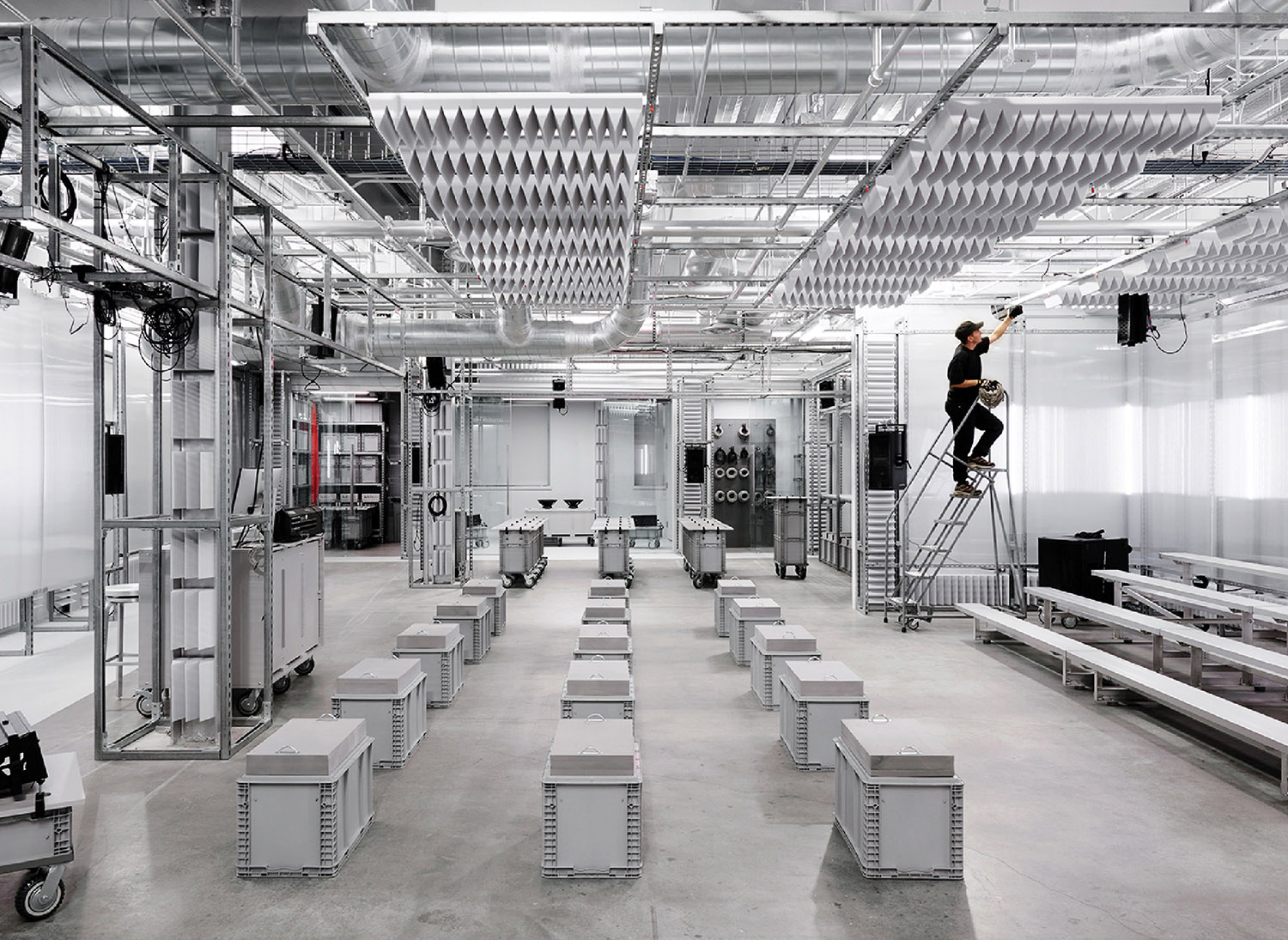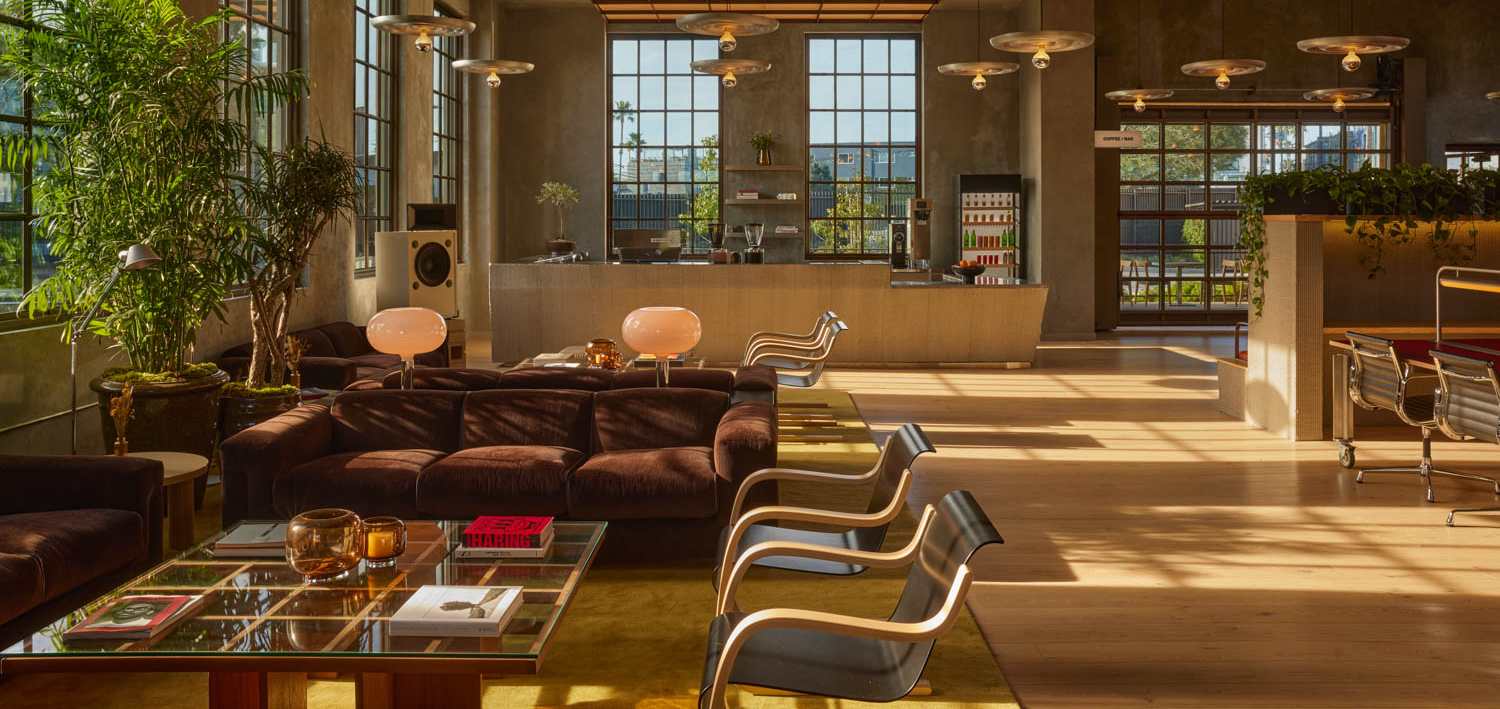Flight Plan: Jet Blue’s Headquarters by HLW International
We have seen the future, and it is JetBlue Airways. Like its circle-patterned tail fins, its headquarters in Long Island City, New York, is modish and deeply branded. Designed by HLW International and located serendipitously in the 1911 home of Brewster Aeronautical—the maker of the Brewster F2A Buffalo, the U.S. Navy’s pudgy World War II prop fighter—JetBlue offers a perfect illustration of how con temporary officing and high-tech aviation fly in tandem.
Taxi away from the blue-and-white reception area to reach the CEO’s surprisingly tiny glass-fronted office, wedged into one of the three massive floor plates occupied by the executive leadership team, or ELT. Everything appears pretty nonhierarchical for the top-down, command-and-control-tower world of airlines, but we can’t take a closer look at the system operations center, yes SOC. In this softly illuminated expanse, behind safety glass, highly trained personnel monitor fleet activity, weather, and the latest cable news feeds. The SOC is a no-fly zone for civilians, so we bank a turn down to the boardroom designated JFK, with its big Manhattan skyline views.
Survey the 200,000-square-foot interior scenery instead, and you’ll notice a few things aside from aviation’s love of three-letter acronyms. JetBlue is New York’s hometown airline. It made its mark-not long after being founded in a Park Avenue office in 1999—by leasing Eero Saarinen and Associates’s onetime TWA terminal and announcing intentions to turn it into a gateway to a vastly larger new Terminal 5 building by Gensler and the Rockwell Group. Executives did subsequently toy with a move to Orlando, Florida, or another “focus city” as part of a competitive search process. But they just couldn’t leave.
Long Island City, a Queens neighborhood on the East River, won the true-blue hearts of the search committee’s members. Not insignificant was the sweetheart-deal lease in the Brewster building, alongside anchor MetLife. “We still believe New York should be the center of aviation, and the city’s been so good to us with our largest base of operations at JFK,” executive vice president and “chief people officer” Joanna Geraghty says. “We just couldn’t see JetBlue anywhere but here.” She and her colleagues even negotiated a rare, cobranded use of Milton Glaser’s famed I Love New York rebus for signage.
Besides local roots, what gave the interiors, architecture, and engineering firm HLW the edge in JetBlue’s extremely competitive interview process? Was it just the three-letter acronym? Hardly. Design director and senior associate Louise Sharp’s team showed up exuding a dedication to match JetBlue’s. The designers brought not only résumés, weighty with professional cred, but also headshots of each person in a blue Afro wig-a nod to JetBlue’s humorous Big Wigs print ad and Internet campaign. As JetBlue facilities manager Robert Bertlesman says, “Every other firm came to us with pretty standard processes. HLW showed up with those wig photos, tossing bouncy balls and beanbags. JetBlue’s five core values are safety, integrity, caring, passion, and fun. HLW grabbed the passion and fun and ran with them.” Sharp also had a more heavy-hitting weapon onboard: the firm’s acclaimed client-needs analysis.
Passion, fun, and hard data joined forces for a power-branded headquarters that balances bling with the bottom line and shuns perimeter offices in favor of daylight and appealing collaborative zones. While Sharp is a corporate veteran, having previously designed cleverly cost-effective offices, the JetBlue mind-set and vocabulary really set off sparks for her and associate and interior designer Jennifer Haney.
It was Haney who integrated corporate branding patterns and catchphrases, known collectively as Jettitude, with an engaging yet simplified palette. There’s JetBlue navy and orange, of course, but they’re found alongside slick white porcelain floor tile and the occasional bamboo veneer. Many of the finishes and built-ins borrow from airport conceits. Flickering like a departures board are the LCD panels that compose the wing-shape sculptures rising three stories through the two main stairwells. “The vertical connection helps the junior staffers feel closer to the executive team, even though they obviously can’t all be in the same place,” Haney says.
A powerful graphic overlay gives office areas and dozens of conference rooms on all three levels “the same brand consistency seen at the T5 terminal,” Sharp says. “When crew members or visitors come into the corporate environment, it reinforces their brand fervor.” (JetBlue’s preferred term for any employee is “crew member.”) The openness and collaborative sensibility, she adds, are vital to the JetBlue esprit de corps. We’ve come a long way from the days of the Brewster F2A Buffalo-without moving an inch.
PROJECT TEAM
SUSAN BOYLE; KIM SACRAMONE; FRAN GOLDSTEIN; MARTA SMITH;
CHANG KWON; WALTER ZUPANCICH; JOE CALABRESE; SUSAN KAPLAN;
KEVIN DOHERTY; BALAZ MORVAY; DIMITRI DUMERLIN; DYLAN
WANSER; SUDESH BHAGWANDEEN; ANDREW BLOOMFIELD: HLW.
LALLY ACOUSTICAL CONSULTING: ACOUSTICAL CONSULTANT. COMMSULT
COMMUNICATIONS; EMS ELECTRONIC MEDIA SYSTEMS: AUDIOVISUAL
CONSULTANTS. EVENTSCAPE: SCULPTURE WORKSHOP.
TURNER CONSTRUCTION COMPANY: GENERAL CONTRACTOR.
TLM GROUP: PROJECT MANAGER.


